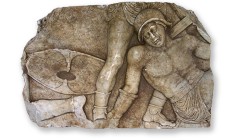Auction houses and the antiquities trade.
Brodie, N. (2014) Auction houses and the antiquities trade. In S. Choulia-Kapeloni (ed.), 3rd International Conference of Experts on the Return of Cultural Property. Athens: Archaeological Receipts Fund, 71-82.
From their prestigious premises in London and New York the large auction houses Sotheby’s and Christie’s and to a lesser extent Bonhams dominate the antiquities market. Straddling the wholesale-retail divide, selling to collectors and dealers alike, their auctions are highlights of the annual antiquities sales calendar. Not surprisingly, given their central place in the market, they frequently become embroiled in disputes over the possession of stolen and illegally-exported (illicit) antiquities. One reason for this seeming vulnerability to third-party fencing opera- tions is their dismissive attitude towards published provenance, considered here to comprise the published ownership history of a piece. In auction catalogues provenance is often not supplied or offered only in barest anonymized outline – “property of a European gentleman” or “bought on the London market” have become cliche ́s. Even when more informative and reliable information is made available, it is usually limited to one or two public events in the otherwise private life of the object – the date and place of a previous sale, for example, or the object’s mention in a scholarly publication. Only on rare occasions is a full provenance detailing an unbroken chain of ownership provided. With nothing that might help to reveal their true nature, there is nothing to hinder the entry onto the market of stolen, illegally-traded or counterfeit antiquities. For this reason alone, auc- tion houses facilitate illegal trade by providing an environment that is conducive to the marketing of illicit material. But their involvement is sometimes thought to go beyond simple facilitation, and extend to more active support. This paper describes cases of auction houses having been caught selling stolen or otherwise illegally-traded material, and examines what they reveal about the policies and practices of auction houses as regards the illicit trade in antiquities, and what evidence there is of the more intimate involvement of auction houses.
